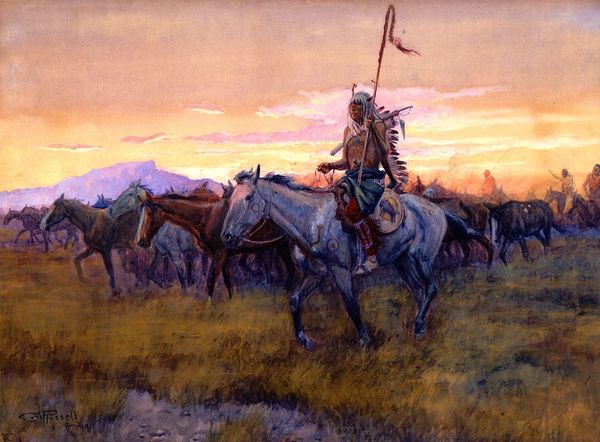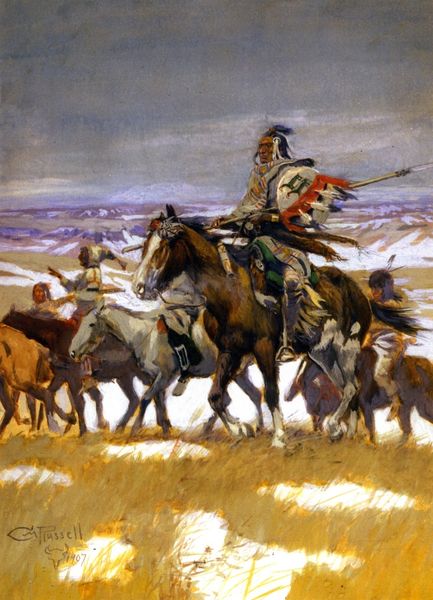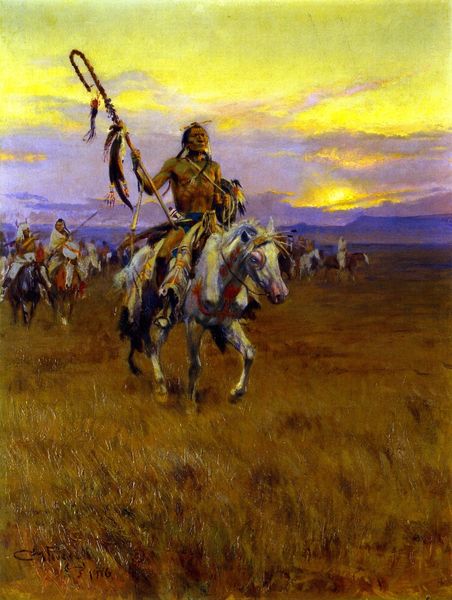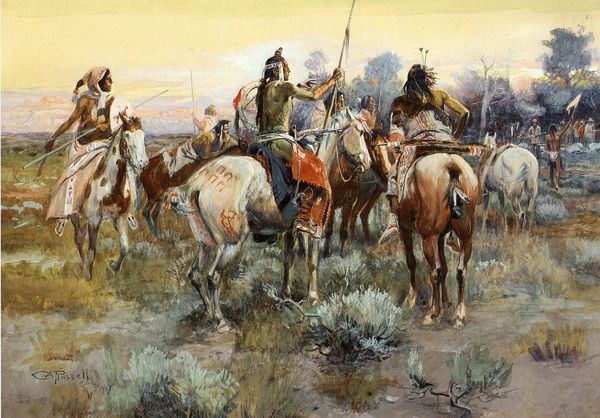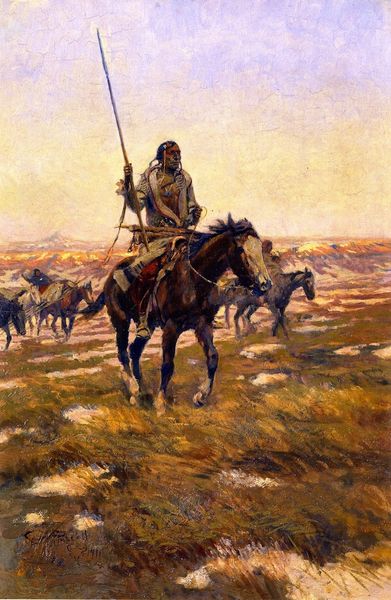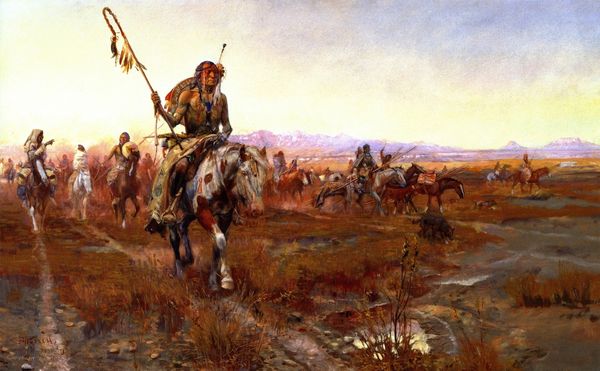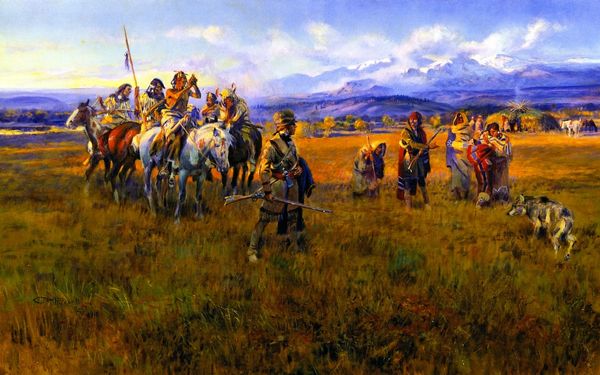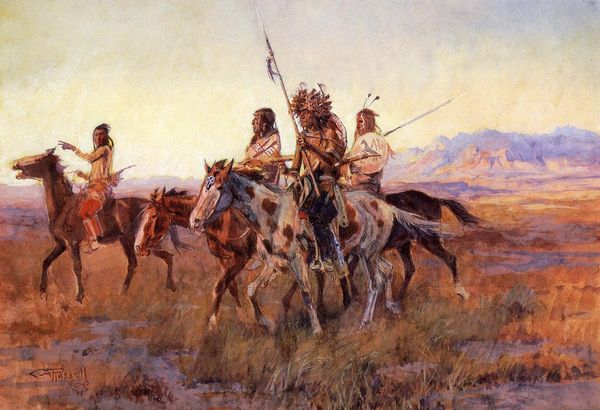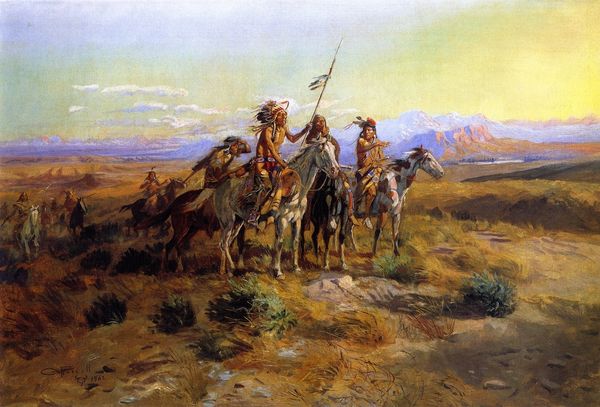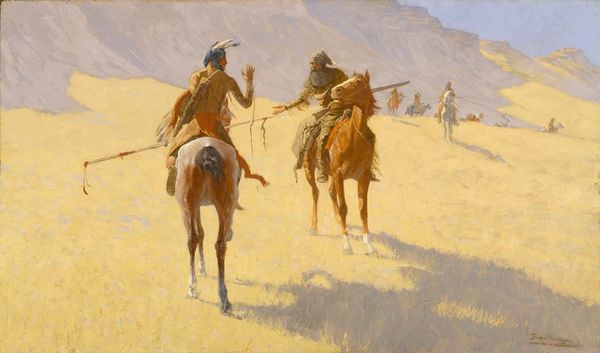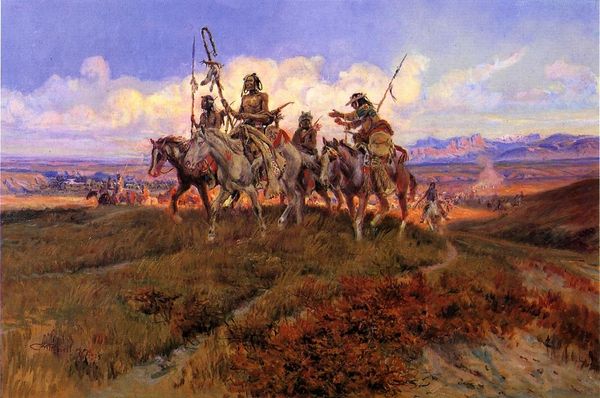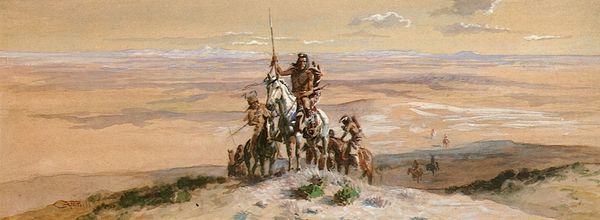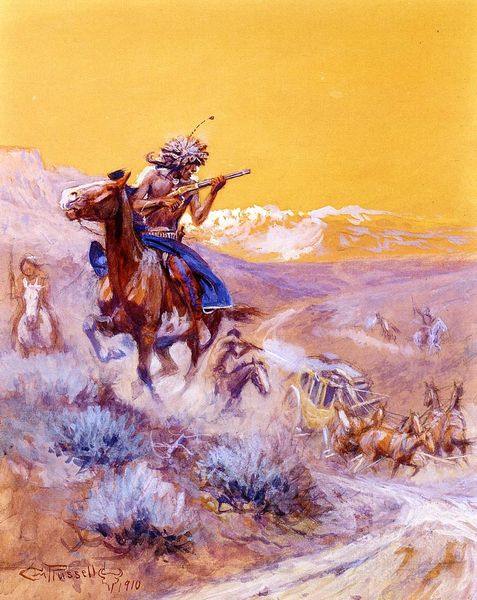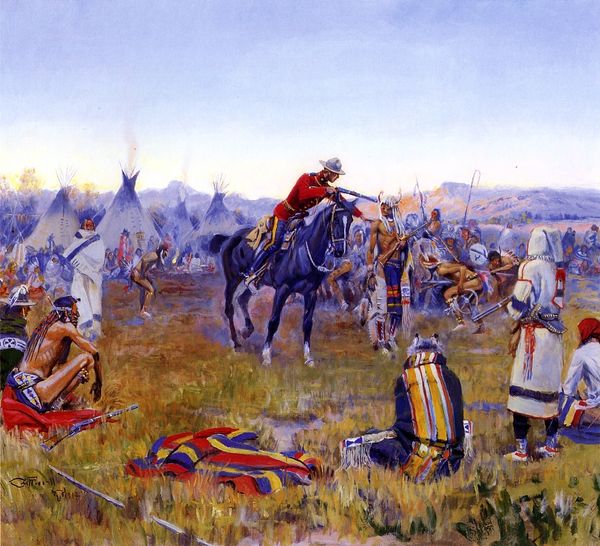
Copyright: Modern Artists: Artvee
Curator: I am struck immediately by the subdued palette—the somber sky, the earth tones—it lends a solemn air to the entire composition. Editor: Indeed. This is "The Flannel Shirt Flag," an oil on canvas created in 1992 by Tom Lovell. It depicts two indigenous figures on horseback in a seemingly vast landscape. Curator: The texture achieved through the impasto technique in the foreground vegetation creates a palpable sense of depth. How interesting to contrast this detail with the somewhat hazy treatment of the background figures! Editor: I agree; Lovell really highlights a turning point in relations between settlers and Indigenous people during westward expansion, reflecting themes often seen in history paintings of the era, though his style definitely reflects realism as well. This canvas captures a moment rife with tension—perhaps hope, but certainly uncertainty. The man with the white flag is interesting considering Lovell’s penchant for imbuing Western genre paintings with an aura of authenticity; how much are we to trust, therefore, the genuineness of his offering? Curator: Let’s focus on this raised flag, then. A pure, stark white—a symbol emptied of specific cultural content, its meaning rendered universal in its stark simplicity. But if one considers the title itself –“The Flannel Shirt Flag,” how can the material value, particularly the implicit cultural capital, of the flannel shirt, influence one’s interpretation of the color of the flag as being indeed devoid of meaning? Editor: Certainly! We can analyze this from a formalist perspective while also examining how art institutions shape production—who is Tom Lovell aiming to capture, to appease through his own rendition of realism? He employs his medium expertly, there is no question, yet it does seem as though he might be pandering to a taste. Curator: In that case, even the texture functions, therefore, to augment a specific reading of this scene! Editor: Precisely. His method is meant to invoke awe at the romantic West! This may obscure or overwrite less flattering or uncomplicated facts for an easy victory in capturing audiences. Curator: Examining the interplay of the artist’s technique alongside such historically weighty subject matter has opened up fresh perspectives here. Editor: It certainly illuminates the complicated dialogue between aesthetic experience and the historical and cultural forces shaping our perceptions of American expansionism.
Comments
No comments
Be the first to comment and join the conversation on the ultimate creative platform.
